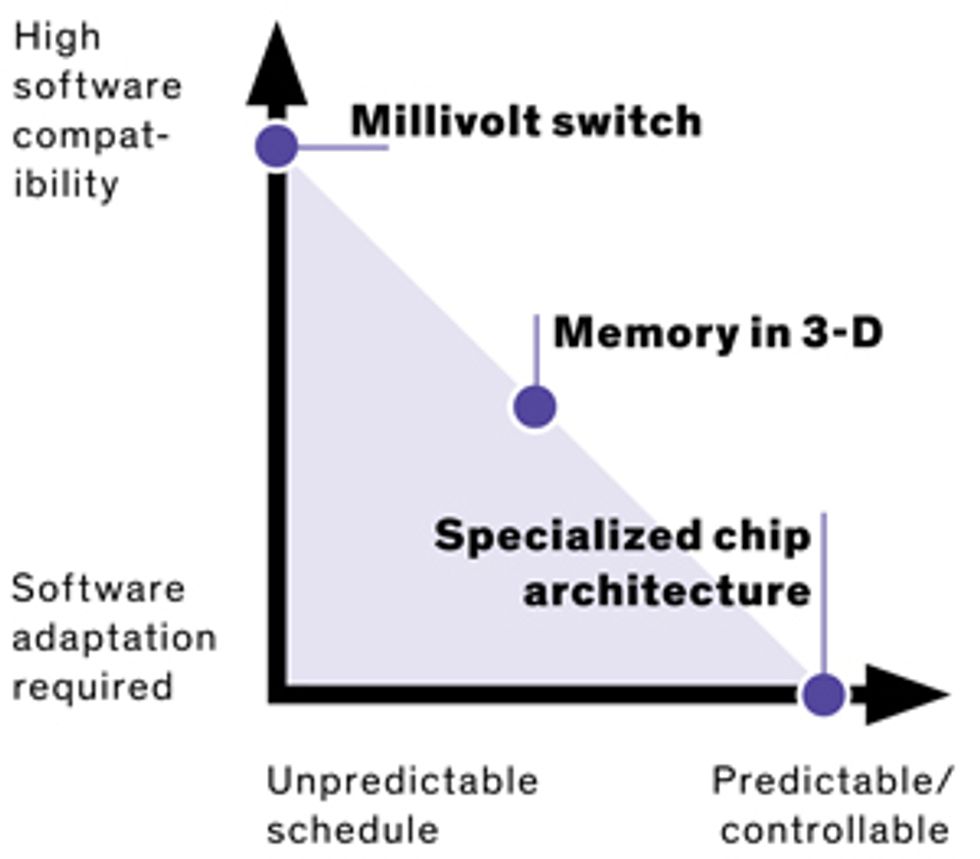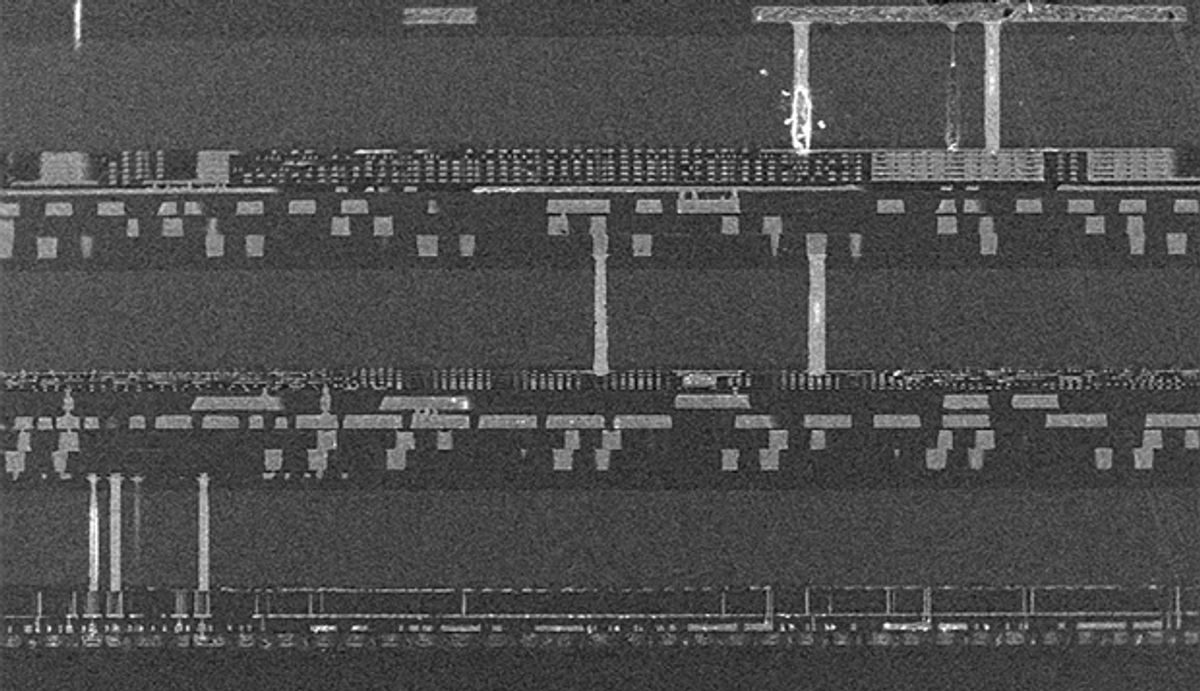
For most of the decade, experts in high-performance computing have had their sights set on exascale computers—supercomputers capable of performing 1 million trillion floating-point operations per second, or 1 exaflops. And we’re now at the point where one could be built, experts say, but at ridiculous cost.
“We could build an exascale computer today, but we might need a nuclear reactor to power it,” says Erik DeBenedictis, a computer engineer at the Advanced Device Technologies department at Sandia National Laboratories, in Albuquerque. “It’s not impossible; it’s just a question of cost.”
Although nuclear reactors are its forte, the U.S. Department of Energy aims to use a more modest power source when it brings its first exascale supercomputer on line sometime in the 2020s. The goal is to have the machine consume no more than 20 megawatts.
Since 2012, DeBenedictis has been working with the IEEE Rebooting Computing initiative and the International Technology Roadmap for Semiconductors on a practical way to get to exascale. He sees three technologies that will lead the way forward: millivolt switches, 3-D stacked memory chips, and specialized processor architectures. Each involves some trade-offs, particularly in the realm of software specialization and because it will be difficult to predict when the technologies could be deployed.
-
The millivolt switch
In accordance with Moore’s Law, engineers had hoped that operating voltages for silicon transistors would continue to fall along with transistor sizes. Instead, the once steady improvement in operating voltages has remained stuck at close to 1 volt for the past decade.
“We could theoretically lower the operating voltage from where it is now—about 800 millivolts—to a few millivolts,” says Eli Yablonovitch, a computer engineer and director of the National Science Foundation’s Center for Energy Efficient Electronics Science at the University of California, Berkeley. Such a “millivolt switch” would be a radical solution to supercomputing’s energy efficiency problem. But it remains an elusive goal.
Nobody knows how a millivolt switch might become a reality, and worse—from the standpoint of building exascale computers in the near future—nobody knows when. But Yablonovitch’s center has chosen to focus on four possibilities. First, there’s a device called a tunnel field-effect transistor, or tunnel FET: Switching it on makes the electronic barrier between the two sides of the transistor so thin that electrons are more likely to “tunnel” through it [see “The Tunneling Transistor,” IEEE Spectrum, October 2013]. A second possibility is tiny nanoelectromechanical switches that would conserve power because little current can leak across an open switch [see “MEMS Switches for Low-Power Logic,” Spectrum, April 2012]. Third, nanophotonics could enable faster, lower-power communication between switches by replacing physical wires with light signals. And fourth, logic circuits based on nanomagnetics could pave the way for lower energy, nonvolatile circuits [see “Better Computing With Magnets,” Spectrum, September 2015].
Yablonovitch coined millivolt switch to illustrate the far-reaching potential of “an energy version of Moore’s Law,” he says. Sandia’s DeBenedictis thinks it won’t have quite as huge an impact as Moore’s Law did, but even so, he estimates that a millivolt switch could improve efficiency by 10 to 100 times.
(After this story originally appeared, Yablonovich said DeBenedictis’ estimate reflects near-term gains, and that the ultimate benefit could be a factor of 10,000 improvement in efficiency.)
-
Memory in 3-D
The U.S. Department of Energy’s vision of a 20-MW exascale supercomputer would reserve 30 percent of the power budget for memory. That power budget goal will require memory-stacking architecture that improves on 3-D stacked DRAM, which puts towers of memory chips closer to a computer chip’s processor units.
Such an arrangement means shorter interconnects between the units—and less power lost to capacitance and resistance when transferring bits of data. Even better, they also mean quicker communication [see “Memory in the Third Dimension,” Spectrum, January 2014].
Stacked memory has already caught on in the broader computing industry. Before 2011, tech giants merely tinkered with it as “science fair projects,” says Robert Patti, chief technology officer and vice president of design engineering at Tezzaron Semiconductor, which has worked on U.S. government supercomputing projects. But since that time, big chipmakers have all developed and commercialized different versions of 3-D stacked memory.
For its part, Tezzaron has pioneered a method of designing and manufacturing 3-D memory stacks that boosts memory performance, enables a higher density of interconnects between each memory chip layer, and reduces manufacturing costs.
“In a lot of ways, 3-D integration allows you to have your cake and eat it too,” Patti says. “You get speed improvement and power reduction at the same time.”
Exascale supercomputing may need to rely less on volatile DRAM—computer memory that holds data only while powered—and move toward more nonvolatile yet fast storage such as resistive RAM, Patti says. A new architecture based on 3-D memory stacking would also require some software retuning as memory access latencies change. But once that’s done, using more memory to upgrade a 1-exaflops supercomputer to 2, 3, or 4 exaflops wouldn’t result in a system that consumes much more power, says DeBenedictis.
-
Specialized chip architecture
Adding specialized cores to computer processors designed to run only a few specific applications might help save on supercomputing’s future power budget. Each part of the chip would run at full power only when its particular function is needed and would be powered down when it’s not.
But such specialized architectures would also require programmers to tailor their software to make use of the added efficiency, and that would constrain what a particular supercomputer could perform efficiently.
“If you want something else, you will have to replace the chip with one of a new design,” says DeBenedictis. He believes that such specialized architectures will likely become a part of exascale supercomputing. As the cost of making chips continues to go down, building a general-purpose supercomputer from specialized chips with dedicated functions might become reasonable.
-
This article originally appeared in print as “Three Paths to Exascale Supercomputing.”
This article was updated on 08 January 2016.
Jeremy Hsu has been working as a science and technology journalist in New York City since 2008. He has written on subjects as diverse as supercomputing and wearable electronics for IEEE Spectrum. When he’s not trying to wrap his head around the latest quantum computing news for Spectrum, he also contributes to a variety of publications such as Scientific American, Discover, Popular Science, and others. He is a graduate of New York University’s Science, Health & Environmental Reporting Program.



